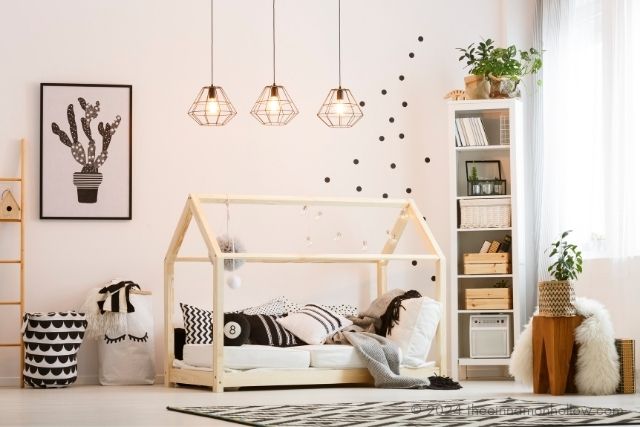As parents, our number one priority is always the safety and well-being of our children. We do everything in our power to protect them from harm and create a safe environment for them to grow and thrive. However, sometimes we may overlook potential hazards in our own homes, especially when it comes to home design. In this blog post, we will discuss some key tips for creating a child-friendly home that is not only safe but also functional and stylish.

Start with the Basics: Childproofing
Childproofing should be the first task: install safety gates at stairs, secure furniture to prevent tipping, and cover electrical outlets. Always keep safety in mind during the design process. Consult reputable Salt Lake City window companies to ensure secure windows for added safety.
Choose Safe Materials
When it comes to selecting materials for your home, it’s important to consider their safety as well. Avoid items such as glass coffee tables or sharp-edged furniture that could potentially harm a child. Instead, opt for rounded edges and soft fabrics that are more child-friendly. Also, be mindful of the materials used in your flooring, as some may be slippery or difficult for children to walk on.
Design with Durability in Mind
Children can be quite rough on furniture and other household items. To avoid constantly replacing damaged pieces, opt for durable designs that can withstand wear and tear. This could include materials such as sturdy wood or metal for tables and chairs, and stain-resistant fabrics for sofas and other upholstered pieces.
Keep Things Low to the Ground
Another important tip for child-friendly home design is to keep things low to the ground. This means choosing lower shelves and cabinets for storage, so children can easily access their toys and belongings without having to climb on furniture. It also means avoiding hanging heavy decorations or artwork that could potentially fall and cause harm.
Incorporate Soft Surfaces
In addition to selecting safe materials, it’s important to incorporate soft surfaces throughout your home. This could include area rugs with non-slip padding, plush carpeting in bedrooms, and comfortable seating options with plenty of cushions. Not only will these soft surfaces provide a safe and comfortable environment for children, but they can also add warmth and texture to your home’s overall design.
Think About Storage Solutions
As any parent knows, children come with a lot of stuff. To keep your home clutter-free and organized, it’s important to think about storage solutions when designing your space. This could mean incorporating built-in shelves or cabinets in playrooms and bedrooms or utilizing multi-functional furniture with hidden storage compartments. Keeping toys and other items off the floor not only creates a safer environment but also makes it easier to keep your home clean and tidy.
Prioritize Functionality
When designing your child-friendly home, it’s important to prioritize functionality over aesthetics. This means choosing furniture that serves a purpose and is well-suited for your family’s needs. For example, a large comfortable sofa may be more practical than a delicate antique piece, and a dining table with extra seating options may be more beneficial than a smaller table that can’t accommodate your growing family.
Incorporate Playful Elements
Just because you’re designing a child-friendly home doesn’t mean it has to lack style or personality. Incorporating playful elements can make your home even more inviting and enjoyable for children. This could be as simple as adding whimsical wallpaper in a child’s bedroom or incorporating bright colors and fun patterns into your home decor.
Consider Your Child’s Developmental Stages
As children grow and develop, their needs and abilities change. When designing your home, it’s important to keep this in mind and make adjustments accordingly. For example, while a nursery may be necessary for infants, it can quickly become obsolete as they reach toddlerhood. Think about how your home design can adapt to your child’s changing needs over time.
Involve Your Children
Finally, one of the best ways to create a truly child-friendly home is to involve your children in the process. Ask for their input and incorporate their ideas into the design. This will not only make them feel included and valued, but it can also help ensure that your home is truly suited to your family’s needs and preferences.
In Conclusion
With a few simple adjustments and considerations, you can create a haven for your children within your own home. By following these child-friendly home design tips, you can create a space that is not only safe and functional but also reflects your family’s unique style and personality.
Remember to always prioritize safety and involve your children in the process, and you will have a home that both you and your little ones can enjoy for years to come. So go ahead, get creative, and make your home a place where your children can learn, play, and grow in a secure and loving environment.






